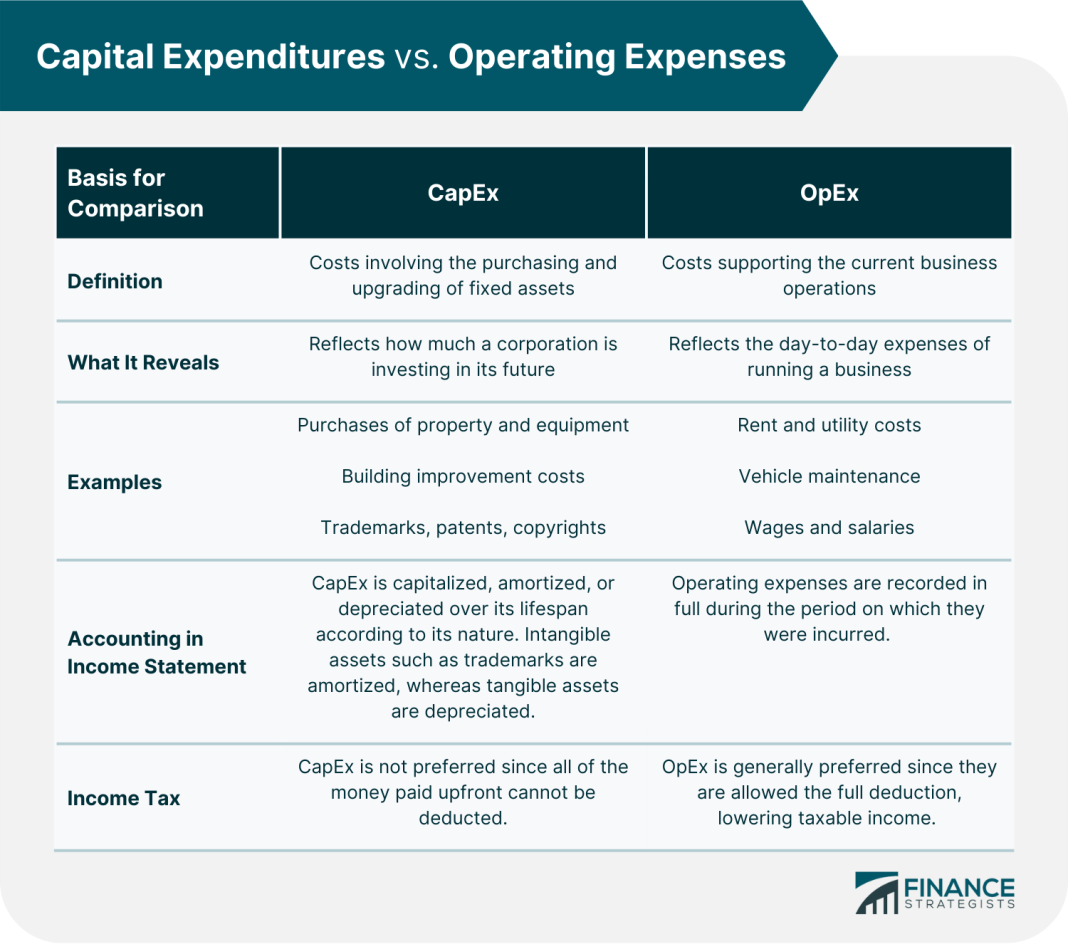Capital expenditure planning is an essential process for businesses of all sizes, but it is particularly important for small businesses. Proper capital expenditure planning can help small businesses make informed decisions about investing in long-term assets, which can help them grow and succeed in the long run. Here are ten key benefits of capital expenditure planning for small businesses.
Improved Cash Flow Management
Effective capital expenditure planning helps businesses manage their cash flow by allowing them to plan for and budget their investments. This ensures that businesses have enough cash on hand to cover their expenses and meet their financial obligations, such as paying bills and employees. In addition, capital expenditure planning can help businesses avoid the need to take out loans or other forms of debt to cover their investments. This can help businesses avoid high interest rates and fees, which can negatively impact their bottom line.
Increased Operational Efficiency
Capital expenditure planning can help small businesses improve their operational efficiency by investing in new equipment, technologies, or other assets that can increase productivity and reduce costs. By identifying and investing in the right assets, businesses can streamline their operations, reduce waste, and improve their bottom line. For example, investing in new software or automated systems can help businesses automate manual tasks and reduce the time and resources needed to complete them. This can free up employees to focus on more strategic tasks, such as business development and customer service.
Better Asset Management
Capital expenditure planning can help small businesses effectively manage their assets by identifying and prioritizing the most important investments. This ensures that businesses are investing in assets that will provide the greatest return on investment and support their long-term growth and success. Effective asset management also involves regularly reviewing and updating capital expenditure plans to ensure that investments continue to align with business goals and objectives. This helps businesses stay agile and responsive to changing market conditions and customer needs.
Improved Decision Making
Capital expenditure planning provides small businesses with the information and insights they need to make informed investment decisions. By considering factors such as asset lifespan, maintenance costs, and potential return on investment, businesses can make strategic decisions that align with their long-term goals and objectives. Effective decision making also involves regular review and analysis of financial data and performance metrics to ensure that investments are delivering the expected returns. This helps businesses make adjustments and course correct as needed to ensure continued growth and success.
Enhanced Competitive Advantage
Capital expenditure planning can help small businesses gain a competitive advantage by investing in assets that differentiate them from their competitors. By investing in new technologies, equipment, or other assets, businesses can improve their products or services, streamline their operations, and better serve their customers.
For example, investing in new marketing technologies or customer service tools can help businesses better understand and engage with their target audience, which can help them gain a competitive edge in the marketplace.
Improved Risk Management
Effective capital expenditure planning can help small businesses mitigate risks associated with long-term asset investments. By considering factors such as asset lifespan, maintenance costs, and potential return on investment, businesses can make informed decisions that reduce the risk of costly mistakes or investments that do not align with their long-term goals and objectives. In addition, regular review and analysis of financial data and performance metrics can help businesses identify potential risks and take proactive measures to mitigate them.
Better Financial Planning
Capital expenditure planning is an essential component of effective financial planning for small businesses. By considering factors such as cash flow, budgeting, and investment priorities, businesses can create a comprehensive financial plan that aligns with their long-term goals and objectives. Effective financial planning also involves regular review and analysis of financial data and performance metrics to ensure that investments are delivering the expected returns and that the financial plan remains aligned with business goals. This helps businesses stay on track and make adjustments as needed to ensure continued growth and success.
Improved Customer Satisfaction
Capital expenditure planning can also help small businesses improve customer satisfaction by investing in assets that enhance the customer experience. By investing in new technologies or equipment that improve product quality, delivery speed, or customer service, businesses can better meet the needs and expectations of their customers. For example, investing in new delivery vehicles or logistics systems can help businesses deliver products faster and more efficiently, which can improve customer satisfaction and loyalty.
Last Word
In conclusion, capital expenditure planning is a critical process for small businesses that want to achieve long-term growth and success. By investing in the right assets and prioritizing investments based on business goals and objectives, small businesses can streamline their operations, improve their bottom line, and gain a competitive edge in the marketplace. Effective capital expenditure planning also involves regular review and analysis of financial data and performance metrics, which helps businesses make informed decisions and stay on track toward their long-term goals.
Apart from this, if you are interested to know more about Many persons accused then visit our Education category









